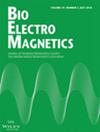Alberto Najera, Alvaro Villaescusa-Tebar, Jesus Gonzalez-Rubio, Concepcion Garcia-Pardo
下载PDF
{"title":"Dual Evaluation and Spatial Analysis of RF-EMF Exposure in 5G: Theoretical Extrapolations and Direct Measurements","authors":"Alberto Najera, Alvaro Villaescusa-Tebar, Jesus Gonzalez-Rubio, Concepcion Garcia-Pardo","doi":"10.1002/bem.70020","DOIUrl":null,"url":null,"abstract":"<p>This study evaluates radiofrequency electromagnetic field (RF-EMF) exposure in 5G networks using a dual approach that combines theoretical extrapolations and direct measurements in diverse semiurban and urban environments, specifically on the campus of the Polytechnic University of Valencia. Measurements were conducted using personal exposimeters under active traffic conditions on the 5G network, complemented by a code-selective measurement system based on an R&S TSME6 scanner. This approach enabled the calculation of maximum theoretical exposure by detailed analysis of 5G signals and the capture of key parameters such as cell ID and beam indices at 16 representative points across the campus. For precise spatial visualization, Kriging interpolation techniques in ArcGIS were employed to generate continuous exposure maps illustrating the spatial distribution of RF-EMF in the study area. The results indicate that both the extrapolated theoretical values and measured levels align with the limits recommended by the ICNIRP, even under high data demand scenarios, supporting current safety assessments of 5G infrastructure regarding electromagnetic exposure. The correlation between theoretical and instantaneous exposures validates the applied methodology and its effectiveness in assessing exposure in diverse environments. This study provides a robust framework for future research and highlights the importance of continuous monitoring to ensure public safety during the deployment of new telecommunications infrastructure in urban areas. Bioelectromagnetics. 00:00–00, 2025. © 2025 Bioelectromagnetics Society.</p>","PeriodicalId":8956,"journal":{"name":"Bioelectromagnetics","volume":"46 6","pages":""},"PeriodicalIF":1.2000,"publicationDate":"2025-08-20","publicationTypes":"Journal Article","fieldsOfStudy":null,"isOpenAccess":false,"openAccessPdf":"https://onlinelibrary.wiley.com/doi/epdf/10.1002/bem.70020","citationCount":"0","resultStr":null,"platform":"Semanticscholar","paperid":null,"PeriodicalName":"Bioelectromagnetics","FirstCategoryId":"99","ListUrlMain":"https://onlinelibrary.wiley.com/doi/10.1002/bem.70020","RegionNum":3,"RegionCategory":"生物学","ArticlePicture":[],"TitleCN":null,"AbstractTextCN":null,"PMCID":null,"EPubDate":"","PubModel":"","JCR":"Q3","JCRName":"BIOLOGY","Score":null,"Total":0}
引用次数: 0
引用
批量引用
Abstract
This study evaluates radiofrequency electromagnetic field (RF-EMF) exposure in 5G networks using a dual approach that combines theoretical extrapolations and direct measurements in diverse semiurban and urban environments, specifically on the campus of the Polytechnic University of Valencia. Measurements were conducted using personal exposimeters under active traffic conditions on the 5G network, complemented by a code-selective measurement system based on an R&S TSME6 scanner. This approach enabled the calculation of maximum theoretical exposure by detailed analysis of 5G signals and the capture of key parameters such as cell ID and beam indices at 16 representative points across the campus. For precise spatial visualization, Kriging interpolation techniques in ArcGIS were employed to generate continuous exposure maps illustrating the spatial distribution of RF-EMF in the study area. The results indicate that both the extrapolated theoretical values and measured levels align with the limits recommended by the ICNIRP, even under high data demand scenarios, supporting current safety assessments of 5G infrastructure regarding electromagnetic exposure. The correlation between theoretical and instantaneous exposures validates the applied methodology and its effectiveness in assessing exposure in diverse environments. This study provides a robust framework for future research and highlights the importance of continuous monitoring to ensure public safety during the deployment of new telecommunications infrastructure in urban areas. Bioelectromagnetics. 00:00–00, 2025. © 2025 Bioelectromagnetics Society.
5G射频电磁场暴露的双重评估和空间分析:理论外推和直接测量
本研究采用双重方法评估5G网络中的射频电磁场(RF-EMF)暴露,该方法将理论推断和直接测量结合在不同的半城市和城市环境中,特别是在瓦伦西亚理工大学校园内。测量是在5G网络的主动交通条件下使用个人曝光仪进行的,辅以基于R&;S TSME6扫描仪的代码选择测量系统。这种方法可以通过详细分析5G信号和捕获关键参数(如小区ID和校园16个代表性点的波束指数)来计算最大理论暴露。为了实现精确的空间可视化,利用ArcGIS中的Kriging插值技术生成研究区RF-EMF空间分布的连续暴露图。结果表明,即使在高数据需求情景下,外推的理论值和测量水平都符合ICNIRP建议的限值,支持当前5G基础设施关于电磁暴露的安全评估。理论暴露和瞬时暴露之间的相关性验证了应用方法及其在评估不同环境下暴露的有效性。这项研究为未来的研究提供了一个强有力的框架,并强调了在城市地区部署新的电信基础设施期间持续监测以确保公共安全的重要性。生物电磁学。00:00 - 00,2025。©2025生物电磁学学会。
本文章由计算机程序翻译,如有差异,请以英文原文为准。


 求助内容:
求助内容: 应助结果提醒方式:
应助结果提醒方式:


